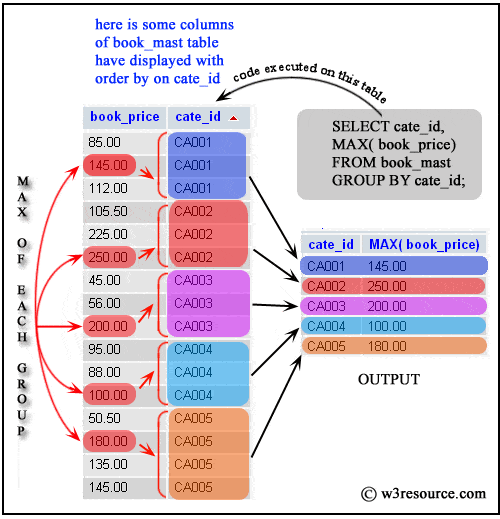
Try It SQLite GROUP BY with MAX, MIN, and AVG functions For example, to get total length and bytes for each album, you use the SUM function to calculate total milliseconds and bytes. You can use the SUM function to calculate total per group. Try It SQLite GROUP BY clause with SUM function example
Sqlite count group by example code#
HAVING COUNT(trackid) > 15 Code language: SQL (Structured Query Language) ( sql ) For example, to get the albums that have more than 15 tracks, you use the following statement: SELECT To filter groups, you use the GROUP BY with HAVING clause. Try It SQLite GROUP BY with HAVING clause Tracks.albumid Code language: SQL (Structured Query Language) ( sql ) INNER JOIN albums ON albums.albumid = tracks.albumid You can query data from multiple tables using the INNER JOIN clause, then use the GROUP BY clause to group rows into a set of summary rows.įor example, the following statement joins the tracks table with the albums table to get the album’s titles and uses the GROUP BY clause with the COUNT function to get the number of tracks per album. Try It SQLite GROUP BY and INNER JOIN clause ORDER BY COUNT(trackid) DESC Code language: SQL (Structured Query Language) ( sql ) You can use the ORDER BY clause to sort the groups as follows: SELECT SELECTĪlbumid Code language: SQL (Structured Query Language) ( sql ) It uses the GROUP BY clause to groups tracks by album and applies the COUNT() function to each group. The following statement returns the album id and the number of tracks per album. SQLite GROUP BY clause with COUNT function We use the tracks table from the sample database for the demonstration. In case a statement contains a WHERE clause, the GROUP BY clause must come after the WHERE clause.įollowing the GROUP BY clause is a column or a list of comma-separated columns used to specify the group. The GROUP BY clause comes after the FROM clause of the SELECT statement.

SELECTĬode language: SQL (Structured Query Language) ( sql ) The following statement illustrates the syntax of the SQLite GROUP BY clause. For each group, you can apply an aggregate function such as MIN, MAX, SUM, COUNT, or AVG to provide more information about each group. The GROUP BY clause returns one row for each group. The GROUP BY clause a selected group of rows into summary rows by values of one or more columns. The GROUP BY clause is an optional clause of the SELECT statement.
Sqlite count group by example how to#
Your queries return exactly the same result, they’re just sorted in the different order.Summary: in this tutorial, you will learn how to use SQLite GROUP BY clause to make a set of summary rows from a set of rows. Take a look at the sorting order in your queries. Since there’re no duplicated records your queries should return the same result because DISTINCT doesn’t do much. As you can see, this query returns no results which means there’re no duplicated records.

The trick here is very simple – we count all users for each book, the number of unique users for each book and compare these 2 numbers. Let’s check how many books are read by the same user twice or more: WITH book_stats AS (ĬOUNT(DISTINCT(user_id)) AS uniq_users_count You see that the results are different and my first guess would be exactly this – there’re duplicated records. More details in the other question of yours. You already know why we’re using DISTINCT here – to avoid counting the same users twice in case there’re duplicated records in the books_users table. Hi question, I think I have a great tip to share with you.


 0 kommentar(er)
0 kommentar(er)
